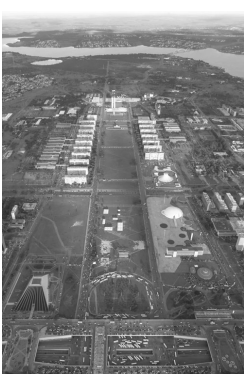Brasília
Carolina Pescatori, R. De Faria

Abstract
Brasília was inaugurated on April 21, 1960, and since then the city has been the seat of the Brazilian federal government. It is located in the Central Highlands, or Planalto Central, and the decision to construct the city should be interpreted as part of President Juscelino Kubitschek's political and macroeconomic actions formulated to guide national development. Brasília's master plan was chosen through a national competition for the new capital pilot plan, which selected Lucio Costa's proposal. The urban plan was conceived with two basic characteristics: mobility, with individual vehicles, and an urban configuration organized by superblocks: residential multifamily buildings and green open spaces. The original plan suffered some modifications, which interfered with the construction of the city. Today, Brasília is a sprawled metropolis comprising the satellite cities and municipalities of the Federal District Integrated Development Region (RIDE‐DF). Brasília is considered a World Heritage Site by UNESCO, as an icon of modernist urbanism and architecture.
De Faria, R., and C. Pescatori. “Brasilia.” In Wiley Blackwell Encyclopedia of Urban and Regional Studies, by A. M. Orum, 1-5. Wiley, 2019. https://doi.org/10.1002/9781118568446.eurs0029

